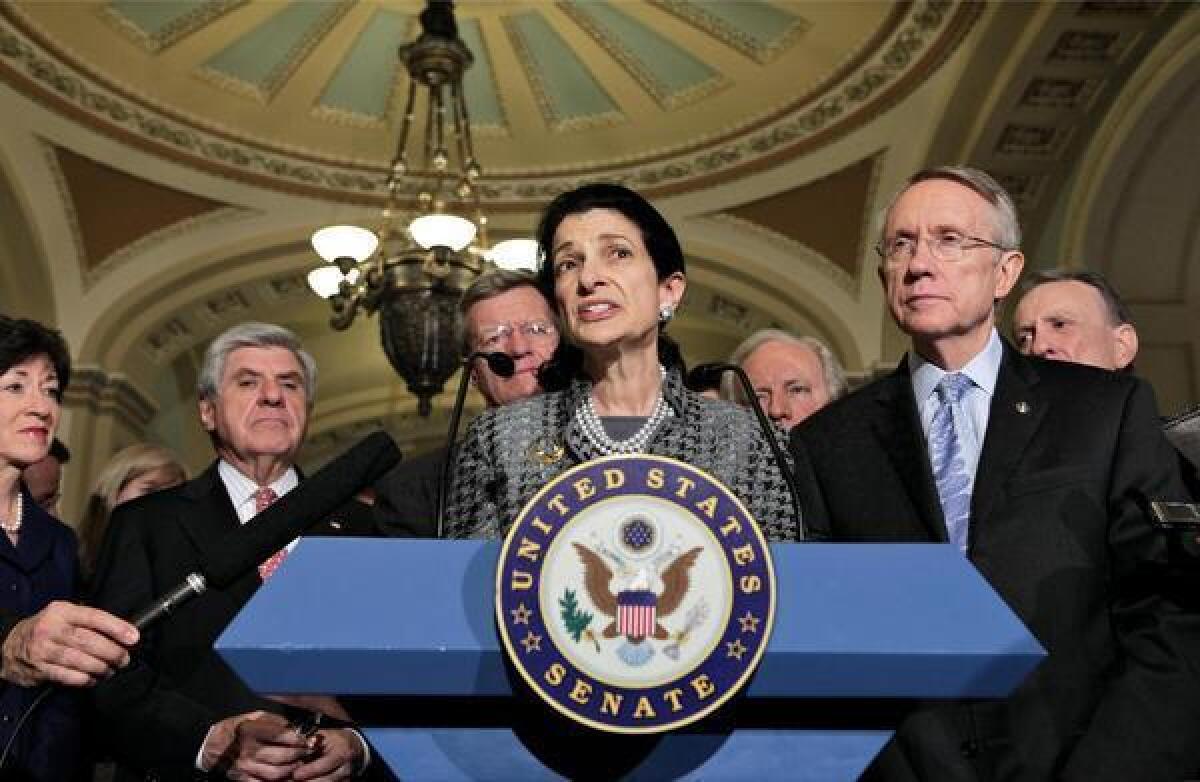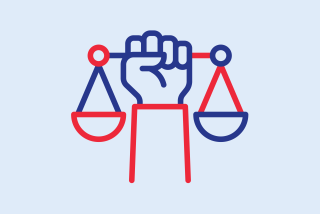A new Commission on Political Reform tries to revive bipartisanship

- Share via
You know there’s something wrong in Congress when something widely viewed as a worst-case scenario happens and yet there’s no rush to try to change course. That’s the case with the “sequester,” the across-the-board reduction in spending that was meant to prod lawmakers to compromise on a smarter and more effective plan to improve the federal government’s finances. Although Congress had more than a year and a half to avert it, the sequester went into effect March 1, drawing catcalls from Democrats and Republicans alike but no visible movement toward an alternative.
That malfunction provides the backdrop for the launch Wednesday of a new project by the Bipartisan Policy Center’s Commission on Political Reform at the Ronald Reagan Presidential Foundation and Library in Simi Valley. The Bipartisan Policy Center is a think tank formed five years ago by former lawmakers from both sides of the aisle. Starting at the Reagan Library, the 30-member commission will hold a series of forums across the country to explore how to improve the political environment, make Congress more functional and get the public more engaged in the process.
One of the leaders of the group is former Sen. Olympia Snowe, a centrist Republican from Maine who decided not to run for reelection last year after she “came to the regrettable conclusion that change wasn’t going to occur within the institution.” She stopped by The Times on Tuesday with another leader of the commission, Democrat Dan Glickman, a former House member from Kansas and Agriculture secretary for President Clinton (and chief executive of the Motion Picture Assn. of America). They argued that the parties have become so focused on their own core supporters, they’ve lost the incentive to work with the other side.
Part of the problem is gerrymandered legislative districts that are so tilted in one party’s favor, lawmakers have to worry only about challenges from within their own parties. That’s a sharp contrast to his days in the House, Glickman said, when the potential for challenges from both the right and the left kept him closer to the middle of the road.
Another issue, Snowe said, is how far Congress has moved away from the “regular order” that helped build consensus by giving members from both sides the chance to shape bills. “We don’t use the legislative process anymore,” she said; bills come straight to the floor without going through committee, and the leadership gives members little chance to offer amendments. Because “there’s no participation by the rank and file,” Snowe said, members don’t develop a sense for the give and take required in legislating.
Part of the answer, Glickman said, is having leadership that’s “willing to risk its position to move things forward.” What Washington has instead, he said, is “a very risk-averse system of government.” Add in a White House increasingly detached from Capitol Hill, and you’re left with an environment in which big ideas are discouraged and half-steps are the rule.
In a Huffington Post article Tuesday, Jennifer Hoelzer, a former aide to Sen. Ron Wyden (D-Ore.), offered another critique of leadership in Washington that helps explain the inability to get big things done. “You can’t be bipartisan if you aren’t willing to let the other side look good,” Hoelzer wrote. “In fact, bipartisanship doesn’t just require you to ‘let’ the other side look good, it requires you to ‘help’ the other side look good.... [And] if there is one thing that Democratic and Republican leadership has in common, it’s how much they love making the other party look bad.
Snowe believes the public is fearful and bewildered about the breakdown in Washington and is losing hope in its ability to solve problems. Members of Congress don’t appear to share these concerns, however. Noting that lawmakers went out on recess shortly before the supposedly devastating sequester cuts were scheduled to go into effect, Snowe said: “They’re not even traumatized by it. There’s a disconnect.”
The commission hopes to tap into what Snowe calls a “great yearning for the American public to right the wrongs” in Washington. The commission, which includes business executives, academics, religious leaders and local government officials, is expected to come up with a series of recommendations for how to end gridlock and reduce the polarization in Washington. After that, Snowe said, the group will try to build grass-roots support for those changes.
The biggest challenge facing the group may be demonstrating that the public actually wants its leaders to make concessions and govern from the middle. Polls suggest that Washington is polarized because America is polarized, split because people differ on some basic values. And members of Congress seem to heed polls and public opinion to a fault. Still, Glickman argues that a large majority of Americans are in the “vast middle,” and it’s just a matter of finding ways to make politicians pay more attention to them. That’s another way of saying that the squeaky wheel that’s been getting all the attention isn’t the one bearing the most weight.
The commission’s session in Simi Valley starts at 10 a.m. and will be webcast on the center’s site. The public is invited to participate via Twitter (#EngageUSA), email (cpr@bipartisanpolicy.org) or the center’s Facebook page.
ALSO:
Goldberg: It’s ‘I told you so’ on Obamacare
Can bipartisanship break out over gun control?
White House reiterates its support for cellphone unlocking. Now what?
Follow Jon Healey on Twitter @jcahealey
More to Read
A cure for the common opinion
Get thought-provoking perspectives with our weekly newsletter.
You may occasionally receive promotional content from the Los Angeles Times.







